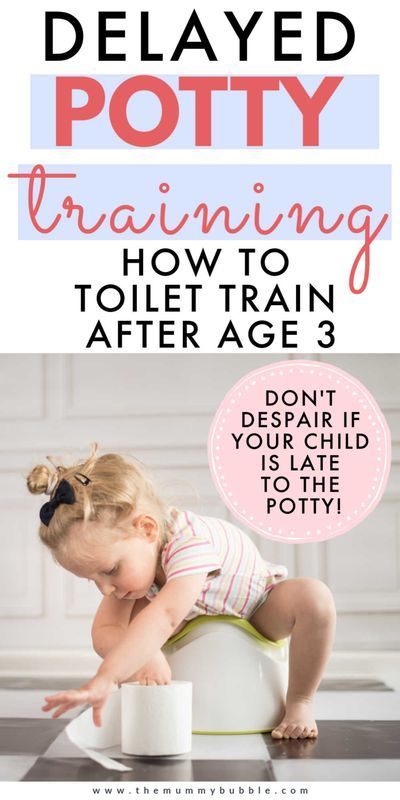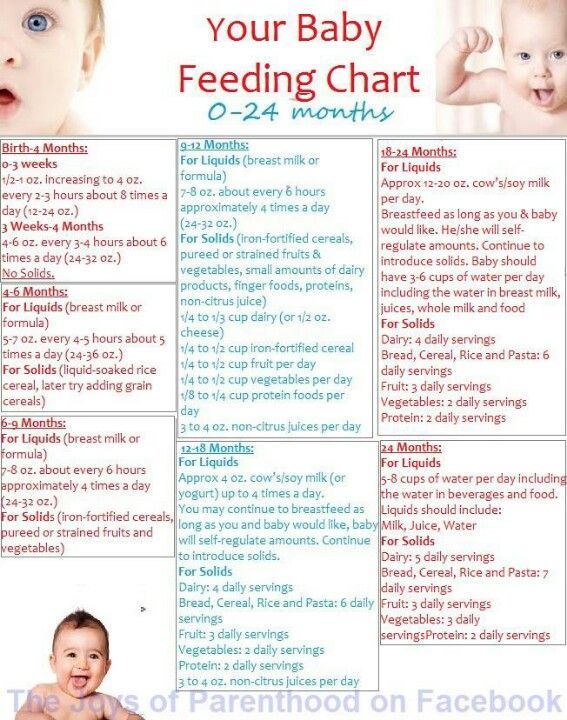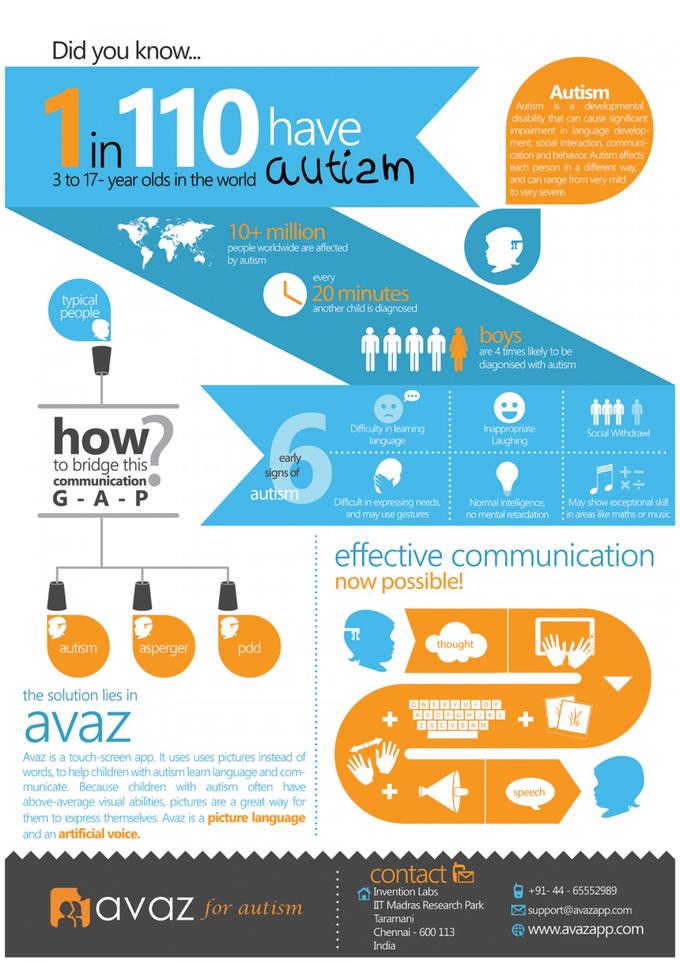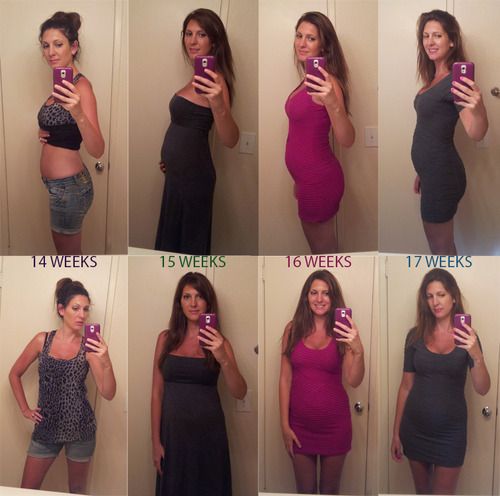How to potty train child who refuses
Toddler Refusing to be Potty Trained? Try…
If you feel as though your 3-year-old is the last kid in her class to master the potty, you’re not alone. While many kids start to show an interest in the potty at 2 years old, recent research indicates that only 40 to 60 percent of children are fully toilet trained by 36 months. The potty training path your child follows will likely be based on temperament, developmental readiness, interest, and even gender, explains Abigail Klemsz, M.D., a pediatrician at Riley Children's Health. “The time it takes to potty train depends on the child. Each of my six kids did it differently,” notes Dr. Klemsz. To help you figure out the best tactics to try, see Dr. Klemsz’s tips below.
Seek out key signs
“Be aware of cues that your child is ready,” says Dr. Klemsz. If you try to push the process too early, you may be in for a long haul. Consider questions such as:
- Does your child ask about the toilet?
- Does he let you know when he’s going to pee or poop?
- Is he able to stay dry for a couple of hours at a time?
- Can he follow simple directions?
- Can he pull up his pants (it’s okay if he needs help)?
If you answered, “yes” to most of these, your child is likely developmentally capable of getting the potty process started.
Stay positive
“Regardless of the method you use, your child is mostly going to dictate how quickly the potty training goes,” says Dr. Klemsz. “So your biggest job is to behave in a positive manner, and not to make the experience negative.” That means you’ll want to give lots of positive reinforcement for successes, such as hugs, praise, and toy trinkets. “Make the act of being on the potty fun,” adds Dr. Klemsz. “I would always have my kids read on the potty, or I would read to them, because the more parents are involved and supportive, the better it is.” When accidents happen, keep your reactions neutral. You might say, “Oh well, we didn’t make it to the potty this time. We’ll keep trying!” Keep your cool so that you don’t turn your child off to the whole endeavor.
Keep the course
What if, despite your 3-year-old’s developmental readiness, she wants nothing to do with the potty? “Make diaper changes very business-like,” says Dr. Klemsz. Whereas previously, diaper changes may have been a chance to connect and cuddle, it’s time to transition your behavior around going to the bathroom. “Dump poop in the toilet to give your child a signal that that’s where pee and poop go,” adds Dr. Klemsz. And if you haven’t done so already, let your child into the bathroom with you so she associates the toilet (not diapers) with going to the bathroom.
“Dump poop in the toilet to give your child a signal that that’s where pee and poop go,” adds Dr. Klemsz. And if you haven’t done so already, let your child into the bathroom with you so she associates the toilet (not diapers) with going to the bathroom.
Work through fears
Pooping on the potty can be a scary concept for children. To combat the fear, show your child there is no danger versus just telling your child. “You can’t rationalize with a 3-year-old about this,” says Dr. Klemsz. Instead, put your child’s doll on the potty and demonstrate how she is okay with the activity. Or let your child see you on the potty and point out that you are just fine.
Keep things flowing
Beyond the common fear of pooping on the potty, children are simply not used to passing stool in a seated position, so it may be hard for them to get the hang of it. Help keep things flowing through your child’s system by giving him lots of fluids and fiber-filled fruits and vegetables. That should make the act of going to the bathroom easier.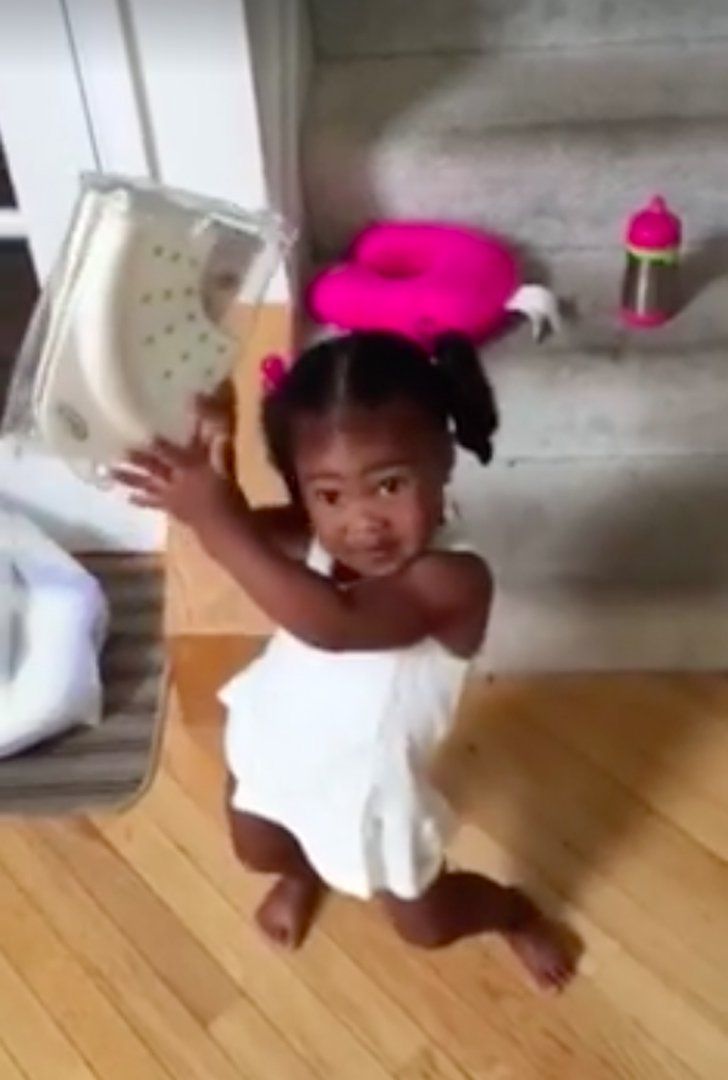 If you notice a significant change in your child’s normal pattern (say he used to poop once a day, and now he’s not pooping at all), talk with your pediatrician about constipation solutions. Your doctor may also want to see your child in order to make sure there is no other underlying issue. “Sometimes it just takes backing off on the training for a couple of days to get your child back on track,” says Dr. Klemsz. After all, stress about potty training can lead a child to hold it in, which can cause constipation, and ultimately pain when pooping.
If you notice a significant change in your child’s normal pattern (say he used to poop once a day, and now he’s not pooping at all), talk with your pediatrician about constipation solutions. Your doctor may also want to see your child in order to make sure there is no other underlying issue. “Sometimes it just takes backing off on the training for a couple of days to get your child back on track,” says Dr. Klemsz. After all, stress about potty training can lead a child to hold it in, which can cause constipation, and ultimately pain when pooping.
Give it time
“You have to provide the structure, the potty or toilet, and the encouragement, but your kid has to want to do it,” says Dr. Klemsz. And remember that if there are a lot of stressors in your child’s life (like a recent move or a new sibling), it can make potty training tougher. But as long as you give potty training a fair shot, “for most kids, they’ll take to it somewhere between ages 3 and 4,” says Dr. Klemsz. In the meantime, she offers this sage advice: “Instead of looking at potty training as a chore, look at it as a chance to get to know your child better—how she learns and how she adjusts to stress. You’ll learn a lot about your child’s personality and the lessons you learn about your child during potty training will inform how you guide her through other challenges from then on.”
You’ll learn a lot about your child’s personality and the lessons you learn about your child during potty training will inform how you guide her through other challenges from then on.”
How to Potty Train a Stubborn Toddler
This post may contain affiliate links; please see our terms of use for details.
What two words strike fear into every parent’s heart? POTTY TRAINING!
And this fear is even stronger for parents of stubborn children. You know who you are. Your day is just one argument or power struggle after another and by evening you’re exhausted.
What happens when you add potty training to this equation? It could spell disaster… but if you follow our steps and take your time you’ll be diaper free before you know it!
Beginning Potty Training: The Parent’s Q&A
1. When should I start thinking about potty training?
The worst thing you can do when starting on this journey with a stubborn child is begin the process too early. If they aren’t ready to start, they will not cooperate. Period. The power struggle will be in play right from the get go and even if you stop and take a break for a month, they’ll remember who won this round and will try it again next time. Trust me.
If they aren’t ready to start, they will not cooperate. Period. The power struggle will be in play right from the get go and even if you stop and take a break for a month, they’ll remember who won this round and will try it again next time. Trust me.
Most children are ready to begin potty training between the age of 2 and slightly after their third birthday, with boys tending to come in later in this time zone. About 50% of boys are trained by age three while 66% of girls are trained by age three. Potty training kids with special needs will most likely take longer.
Don’t try to rush the process by starting when your child is too young. The American Association of Pediatrics reports that kids who begin potty training at 18 months are generally not fully trained until age 4, while kids who begin training at age 2 are generally fully trained by age 3. Many kids will not master bowel movements on the toilet until well into their fourth year.
2. When will I know my child is ready to potty train?
Your child will show you tell-tale signs that they are ready. Here are some things to look for:
Here are some things to look for:
- Your child will tell you when their diaper is dirty.
- Your child will tell you right before or while they are going that they are going.
- Their diaper stays dry for about two hours at a time during the day.
- Bowel movements come at regular times.
- Your child will typically stay dry through the night.
- Your child may show an interest in the toilet and an interest in underpants.
- Your child may take off wet diapers themselves because they’re uncomfortable.
- You may notice your child making a face before peeing or pooping.
- You may also notice that your child is more independent, wants to do things for themselves or do them their own way, and probably enjoys some alone time.
Your child is not ready to potty train if they are resistant or afraid of the toilet, have a bowel movement or urinate right after you’ve had them sit on the potty, or wet their diaper in less than two hour intervals.
3. How Long Will it Take?
That completely depends on your child. For most kids you can expect it to be a good two or three months before they are completely potty trained. For others, especially kids with special needs, it could take much, much longer. Take a deep breath, put on your patient hat, and be prepared for lots of accidents.
The Potty Training Shopping List
Being prepared ahead of time will help you gain the upper hand. And it’s always a good idea to be one step ahead of your toddler!
- Potty or training seat: Getting a good potty seat is really key to your success. You want your child to be comfortable and feel safe on the potty. We really love the Baby Björn adjustable potty seat which fits directly on the toilet, but some kids prefer to start out on the floor. In that case, the Baby Björn potty chair is a good choice.
- Step stool: If you’re planning to have your child sit on the toilet with a potty seat, you’ll definitely want a step stool to keep them feeling secure and balanced.
 Sitting high up on a toilet seat with your legs dangling can feel scary and uncomfortable. A simple step stool can make a world of difference and help your child feel safer in the bathroom.
Sitting high up on a toilet seat with your legs dangling can feel scary and uncomfortable. A simple step stool can make a world of difference and help your child feel safer in the bathroom.
- Potty training picture books: Throw some potty books on your book shelf and incorporate training into your reading time, too.
- Underpants: Have fun picking out underpants with cartoon characters and bright colors. Make a special trip out of it!
- Training pants: These pants are more absorbent than regular underwear and can pick up little leaks. You can pair them with vinyl pants as a nice in between stage between diapers and underwear.
- Potty training cartoon videos: There are many training videos out there that will help reinforce potty training through cartoons. We love Elmo’s Potty Time.
- Drink and wet doll: Remember how fun you had with these life-like dolls? And they are a great learning tool too!
- Sweatpants and other easy to remove clothing: You’ve probably already got a nice collection of comfort clothes for your child, but if not, now’s the time to pick some up.
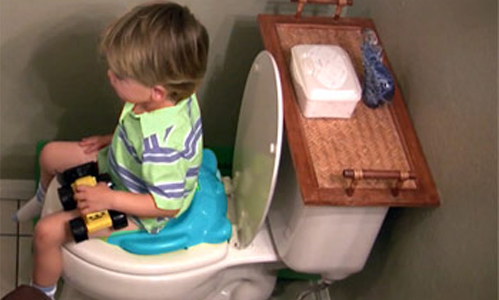 Of course, some parents opt for the pants-less potty training approach!
Of course, some parents opt for the pants-less potty training approach!
Preparing for Potty Training
Stubborn children will sense something is up before you tell them and they will be on their guard. Rather than trying to spring potty training on your child like a sneak attack, involve them in the preparations. Involved kids are more likely to cooperate and less likely to view the whole process as a you-versus-them scenario.
Here are some fun tips to get your little one on your potty training team:
- Have your child help you “train” a doll or stuffed animal. You may want to even consider buying a drink and wet doll with a little toilet so your child can get the whole experience of drinking and then urinating afterwards.
- Go out and have fun buying cool new underwear.
- While still in diapers, have your child begin to help with diapering so that they become more aware of the process. Have them get you a dry diaper, decide where to get changed, pull pants down and up, even help wipe.
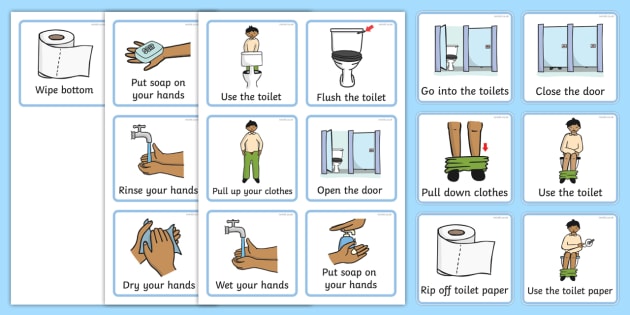 Talk about what they are doing and begin talking about how soon they will be using the potty.
Talk about what they are doing and begin talking about how soon they will be using the potty.
- Read fun picture books about toilet training.
- When your toddler is still in diapers, don’t change them right away so they can begin to associate a feeling of discomfort with diapers. It will also help them become more involved because they may begin asking you to change their diapers.
- Let them watch you in the bathroom so they know that adults and older siblings use the toilet. Talk about how nice it is to not have to wear diapers. Tell them they will be learning to use the toilet too very soon.
- When you’re really ready to get started, fill a basket with about two or three days worth of diapers and say, “These are the last diapers. When these diapers are gone you’re going to have to use the potty.” This way your child will have a heads up and a very tangible sign that potty training day is coming soon.
The Step-By-Step Guide to Potty Training
Well, potty training day has finally arrived! Hopefully your little strong-willed toddler is still on board! Now’s the time to take things easy, don’t push too hard, and get out the bleach wipes because you’re going to need them.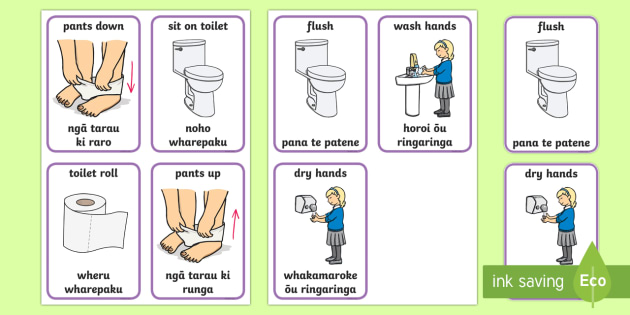
Follow these simple tips and you should be crossing diapers off your shopping list in no time:
- Pick a week that you can devote full-time to potty training, like spring break or winter holiday. Don’t start training during a time of stress, especially at the birth of a sibling where kids naturally regress a bit developmentally anyway. If you can mange it, try potty training during the summer when it will be warmer and more comfortable for your toddler to run about with little to no clothing on.
- When it’s time to sit on the potty, don’t ask your child if he has to go potty because the answer will usually be no. Just take him to the potty and sit him on it.
- Sit him on the potty until he goes or for a reasonable amount of time (5 minutes).
- After sitting on the potty, set a timer for 30 minutes if he didn’t potty, 1 hour if he did. Sit on the potty when the timer goes off (this way the timer is the one saying it’s time to sit on the potty, not you).

- Drink lots of fluids.
- Wear underwear and clothes that are easy to get on and off. Many parents potty train their kids with no pants at all just so that they can focus on the potty and not the clothes. If your child is completely naked for potty training (at least on the bottom), accidents will be much more obvious to them. Summer is a great time to potty train because of warmer weather.
- Don’t get upset over accidents (because there will be some). Just clean up and continue with the day. You don’t want your child to become afraid of failure.
- Praise is very important, but make sure you don’t overdo it because this can actually add pressure to the situation, too. You don’t want your child to feel like they’ve let you down when they have an accident.
- Help him relax on the potty. A good way to do this is to come up with a soothing potty song. We sing, “Pee pee, pee pee, it’s time to take a pee pee,” nice and slow and to the tune of “A Tisket a Tasket.
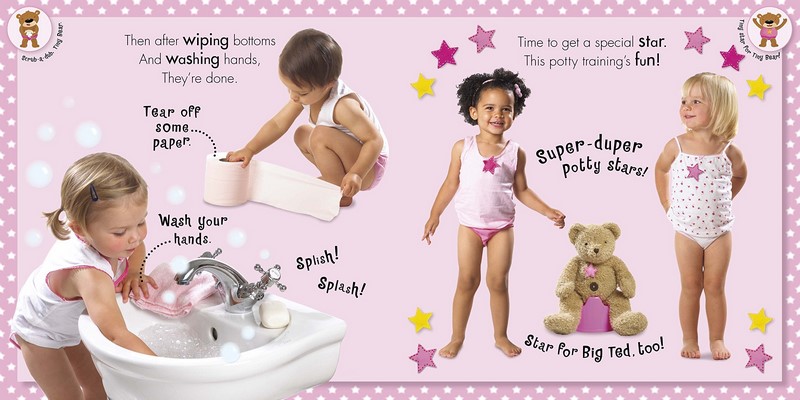 ”
”
- Have a reward ready for successful potties. A big glass jar of M&M’s works well because it’s colorful and they can see the prize sitting on the shelf waiting for them. A chart with squares and stickers is good too. Of course, this means that whatever you give as reward in the bathroom has to stay in the bathroom—no M&M’s throughout the rest of the day! Give a reward for sitting on the potty even if they don’t pee, but give a bigger reward if they do pee. Wean off the rewards after a couple of weeks of successful potties. Begin by “forgetting” the treat until your child reminds you—eventually they’ll forget too.
- Continue to wear a diaper to bed for a while or on long outings. Don’t worry about night time dryness while you’re teaching to use the potty during the day.
- Here’s a Fun Tip: Put a couple of drops of food coloring in the potty and tell your child that when she pees it’ll turn the water a different color. Or put cheerios in the potty and see if your son can aim and sink them.
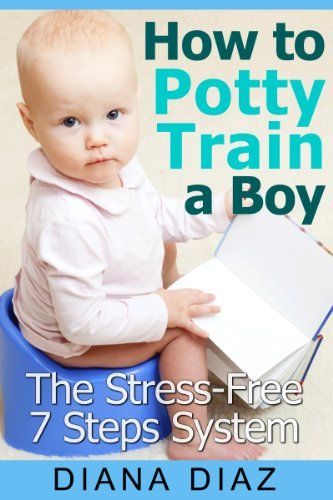
Remember: Relax and take it easy. Your child will learn how to use the toilet, even if they are terribly stubborn. It may take a bit longer and you certainly don’t want to rush or pressure them, but if they’re developmentally ready to potty train, it will happen. Really.
Coercion will only slow down learning: how to potty train a child
At what age should a child go to the potty
Child development is always an individual process, therefore it is impossible to name the exact age at which all children, without exception, should go to the potty. However, the child begins to feel the fullness of the bladder and intestines not earlier than one and a half years.
This was reported to Gazeta.Ru by Elena Grek, a pediatrician at the SM-Clinic in St. Petersburg: “Today, many parents prefer to use diapers for as long as possible and start potty training no earlier than the child is 1.5–2 years old . It is believed that by this age, the physiological ability to control the urge to urinate and defecate is finally formed in children. As well as an adequate perception of the requests of adults. nine0005
As well as an adequate perception of the requests of adults. nine0005
However, Dr. Grek emphasizes that the later mom and dad start potty training, the longer it will take to see results and the more difficult it will be to give up diapers.
“Therefore, potty train your baby gradually from 6 months onwards, as soon as he learns to hold his back and sit up. In this case, the child will learn to use the potty by the age of one, ”advises the pediatrician.
However, the total elimination of diapers will take place later. The ability to go to the potty does not always indicate the readiness of the child to use it every time, since at an early age children do it unconsciously. Do not worry if the emptying of the bladder occurred in clothes - such rollbacks sometimes happen, but they do not indicate that the development of the child has gone the wrong way. nine0005
Praise your child every time he manages to do his potty chores.
What does it mean to potty train a child? The following skills speak of complete independence:
1. Your child is aware of the desire to go to the toilet.
Your child is aware of the desire to go to the toilet.
2. Your child is able to use the potty by himself or signal his intentions to his parents.
3. Your child can sit on the potty and do his own chores.
close
100%
What to do if your child does not want to sit on the potty
Many parents want to get rid of diapers as soon as possible. But what if the child does not want to sit on the potty?
In a conversation with Gazeta.Ru, Yuliya Tokarchuk, psychologist-teacher, researcher at the Center for Interdisciplinary Research of Modern Childhood, Moscow State University of Psychology and Education, warns parents not to force a child to use the potty against their will:
“A child should never experience pressure on the part of an adult, otherwise it can scare him and push him away from the learning process for a long time. It often happens that a child does not understand what his parents want from him. Therefore, you can first show the process with the help of a doll or baby doll.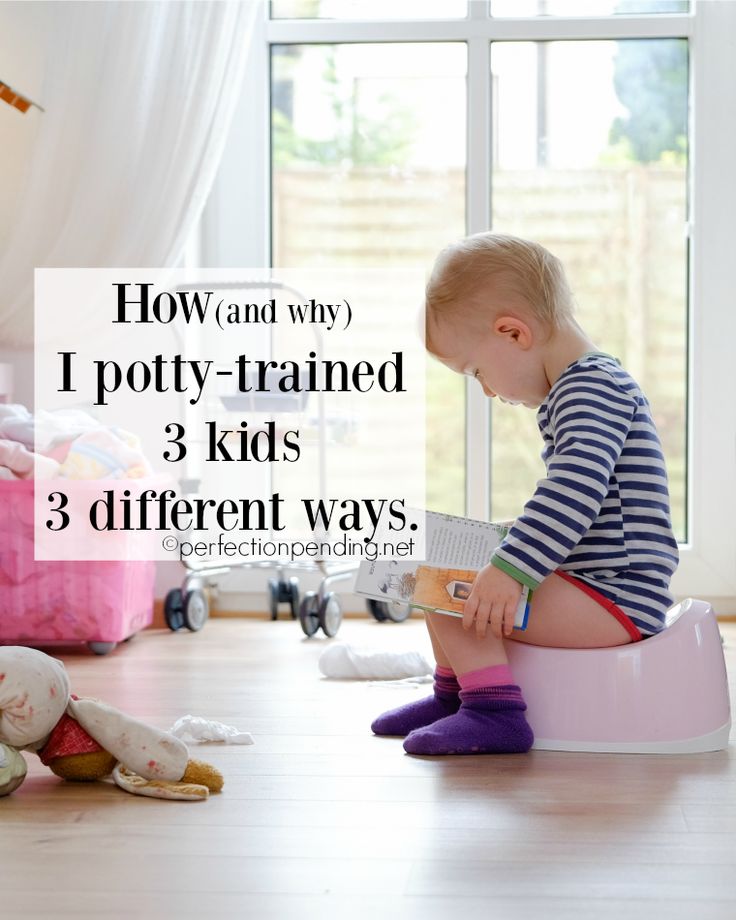 In case of a successful attempt, hug and praise the child, because the positive emotional reaction of the parent is very important for him - this is a small victory. nine0005
In case of a successful attempt, hug and praise the child, because the positive emotional reaction of the parent is very important for him - this is a small victory. nine0005
The psychologist also recommends moms and dads regularly during the day to offer the child to go to the potty, for example, before and after a walk, before going to bed, after waking up, and so on. But by no means insist.
Why success depends on the choice of a potty
The process of accustoming a child to the toilet also depends on the choice of a potty. So, the teacher Julia Tokarchuk recommends that the son or daughter choose the one that they like best. Be sure to praise your child for his choice! nine0005
However, the potty should be not only beautiful, but also comfortable.
To make your child want to sit on the potty, when choosing a product, pay attention to compliance with certain requirements.
A properly fitted potty should be:
• stable so that your child does not fall off;
• pleasant to the touch and with smooth shapes;
• tailored to the age and size of the child for a comfortable seat;
Also keep the pot clean and dry at all times. nine0005
close
100%
Where should the potty be placed?
Pediatrician Elena Grek said that there is no “one right” place for a potty, but it is important to make sure that it is accessible to the child:
“At the initial stage, it is better to put it in the child’s room. Moreover, it is desirable in a conspicuous place: so it will always be in the field of view of the baby. After a year, when the child has already become a “confident user”, the potty can be moved to the toilet. In the future, this will facilitate the process of accustoming to the toilet. The main thing is to make sure that the baby is not afraid of the sound of water or the sight of the toilet itself. nine0005
In order to potty train your child faster, the place for the baby toilet should be permanent. After all, the desire to go to the toilet can overtake a child at any moment, and the search for a potty will confuse him.
How to Potty Train Your Child Easily
There are dozens of different techniques and tips for potty training a child.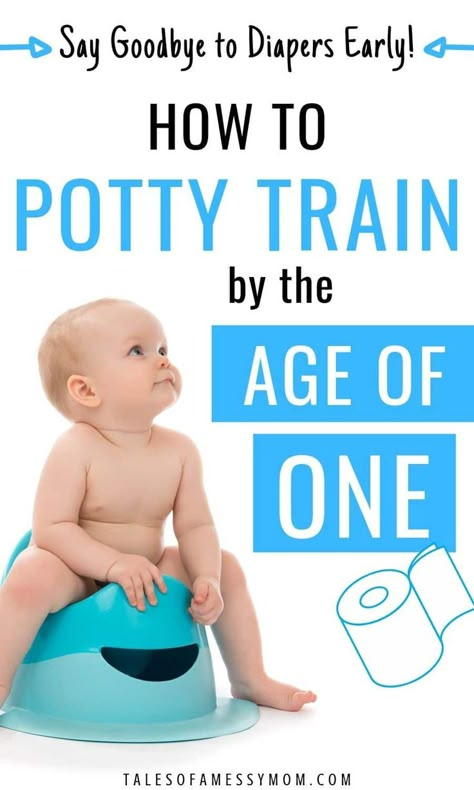 However, everything here is very individual.
However, everything here is very individual.
Elena Grek warns: “What works for one child may not work at all for another. For example, some kids are distracted by adult conversations from the process. And others, on the contrary, help to concentrate. Someone in general can relieve himself only by reading a book. nine0005
close
100%
At the beginning of potty training, it is advisable to put the child on the potty as often as possible: immediately after waking up, when returning from a walk or after eating. Over time, it will become easier to predict the desire to go to the toilet.
Pay attention to the child's behavior and reactions. So, he can suddenly become excited, or vice versa, shy. Someone is trying to hide, someone is fiddling with clothes, someone is taking a specific pose, someone has a “tense” facial expression - all this may indicate the child’s readiness to go to the toilet. nine0005
Such "signals" should be noticed and memorized - this will help to understand in time that your child wants to go to the toilet and offer him a potty.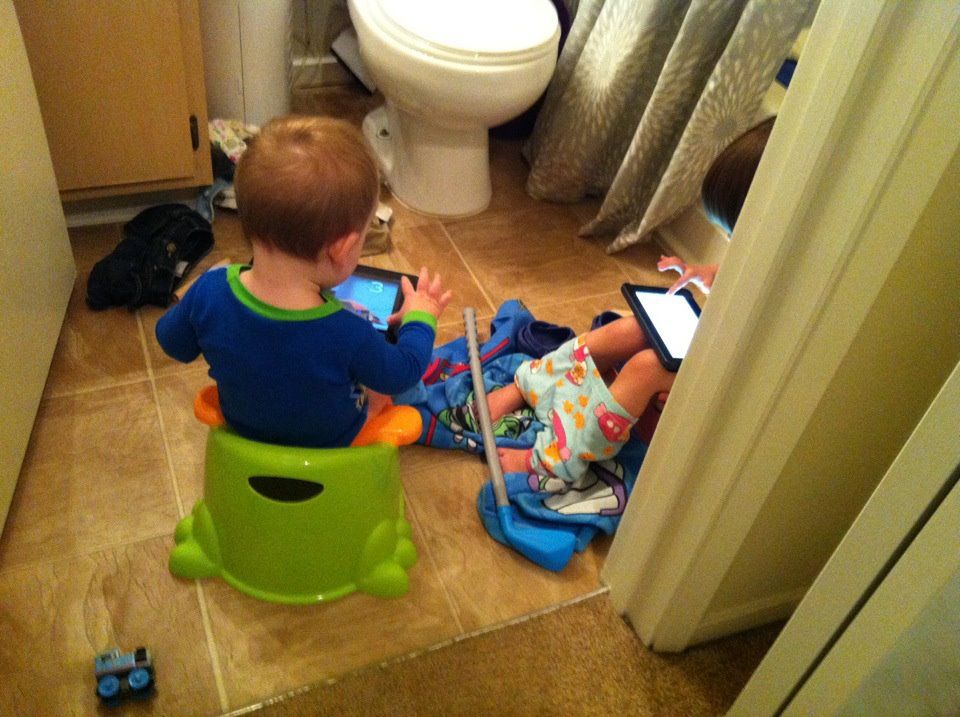
Elena Grek also recommends demonstrating the purpose of the pot on a personal example. Some parents consider this method too radical. However, he can really potty train a child - children always tend to repeat after their elders.
Many children empty their bladders and bowels at certain times. It is worth finding out what hours this most often happens and try to offer a pot at that time. Dryness for one to two hours may indicate that the child will soon have a desire to go to the toilet. nine0005
Another tip to help potty train your child: put your child on the potty to specific sounds.
“It is also useful to form in a child an associative connection between going to the potty and some kind of sound (“aaah”, “pee-pee”). Over time, these sounds will start to trigger a reflex in the baby, signaling that it's time to go to the toilet, ”recommends the pediatrician.
If you hear sounds from your child that you yourself make during planting, know that the potty is about to be needed. nine0005
nine0005
The process of potty training requires great patience on the part of parents. Elena Grek warns that in some cases, you will have to take breaks in training: “If the potty causes fear and constant tears in the baby, you should not shame him or force him to sit down through I don’t want to. Coercion or scolding will only slow learning. It is better to calmly explain to the child why this “terrible object” is needed. If persuasion does not help to calm the panic, it is better to remove the pot altogether for a couple of days, and then start all over from scratch. nine0005
How to potty train a child: step by step instructions | Chalk
The moment when a child himself asks for a potty can be safely compared in significance with the first step and the first word. How to bring this time closer - and is it possible? Let's figure it out.
When to start potty training a child
This is perhaps the most important question asked by parents of children from 1 year old.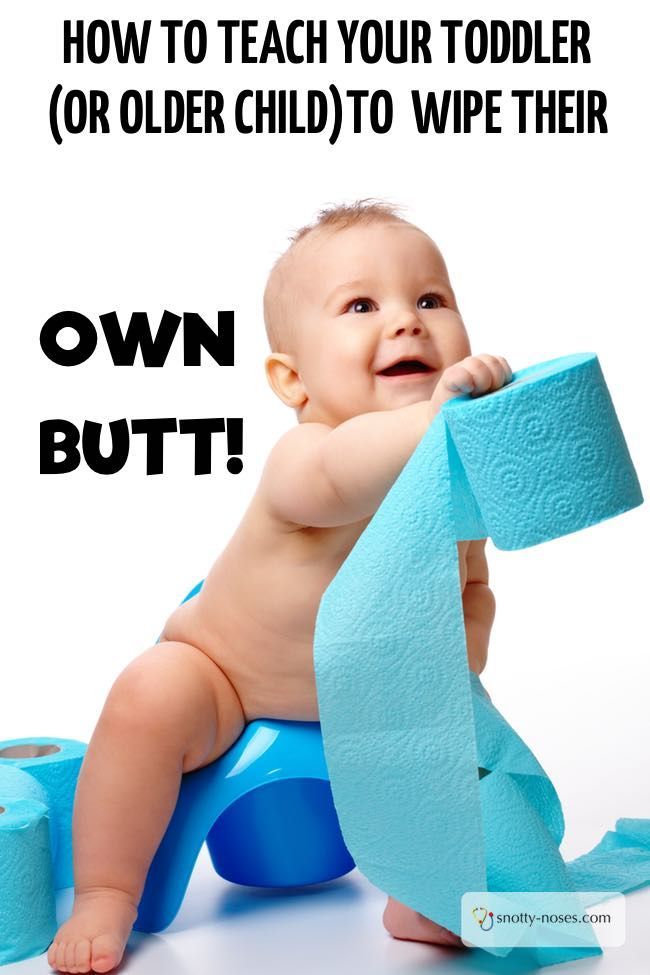 But there are no exact recommendations regarding both the lower and upper limits of the age of potty training. It is believed that by the age of 3, children should already be able to cope with going to the toilet on their own. But in the West, you can often meet children who wear diapers at the age of 3 or 4 - and no one pays attention to this. nine0005
But there are no exact recommendations regarding both the lower and upper limits of the age of potty training. It is believed that by the age of 3, children should already be able to cope with going to the toilet on their own. But in the West, you can often meet children who wear diapers at the age of 3 or 4 - and no one pays attention to this. nine0005
In any case, both our and Western experts now agree that each child is individual and it is necessary to focus not on age, but on the level of his development.
An approximate lower age range that can be identified is from 14 months to 3 years. However, doctors usually clarify: if you start potty training at 14-16 months, then the process can stretch for several more months, and if you start at 2 years and later, you can do it in just a week.
Why such numbers? The thing is that the signaling system is responsible for the process of urination and defecation, and until it matures, you can try for as long as you like, but there will be no result. In fact, if you are trying to teach a six-month-old baby to consciously potty train, this can be compared to trying to teach a newborn to walk: a child at this age is simply not ready for this process from a purely physiological point of view. nine0005
Up to 16–18 months, excretory processes occur reflexively, without involvement of the nervous system
From a physiological point of view, potty training can begin when the child has learned to walk, can squat, holds himself in space, can take off his clothes and gestures show what he wants. As a rule, a child masters all these skills by 1–1.5 years. But here a psychological moment comes in the way, namely the crisis of the first year, when the child becomes capricious and uncontrollable, for the first time begins to say “no”. nine0005
How to know if a child is ready to use the potty
- He shows interest in the toilet and what other family members are doing there;
- Understands when he went to the toilet, requires gestures or words to change the diaper or wash it.
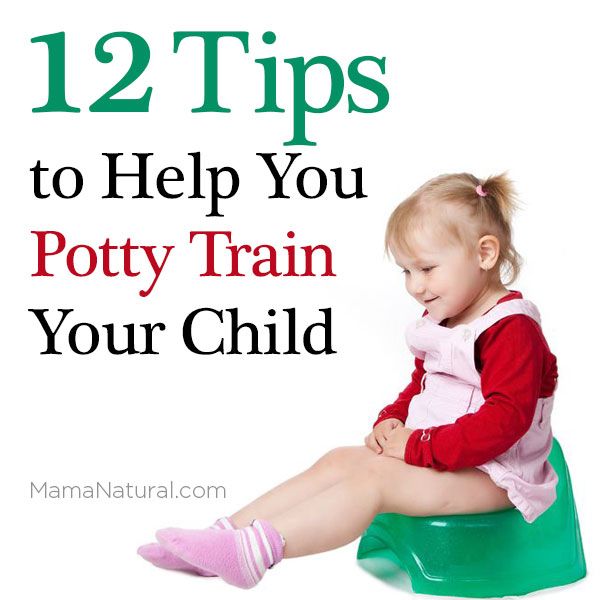 That is, he experiences discomfort and understands the reason for this discomfort;
That is, he experiences discomfort and understands the reason for this discomfort; - Child stays dry during naps or more than two hours during the day;
- The child shows by gestures, words or facial expressions when he wants to go to the toilet. It is not uncommon for children to hide behind a curtain when they are doing "big things", squat down, move into another room, or hide in a corner, trying to simulate the isolation of the space for their intimate needs. nine0122
In addition, it is very important that at the time of the beginning of potty training the child is healthy, cheerful and cheerful.
7 reasons that should make you put off the pot until better times:
- the child is sick;
- the child is teething;
- the child did not pass the crisis of the first year;
- you are weaning or weaning a baby from a bottle/pacifier;
- a younger brother or sister has recently been born; nine0122
- moving to a new location;
- mother's going to work (and other stressful situations that knock the child out of his usual rhythm of life).
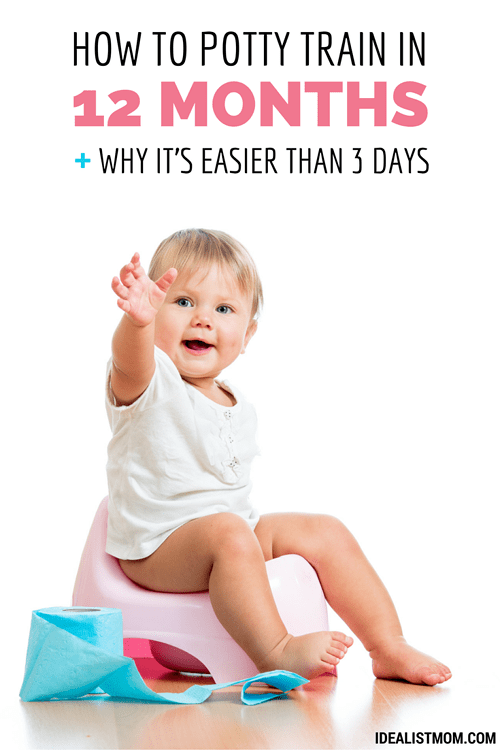
How to start potty training
The first step is to get yourself a potty. The choice of a toilet accessory should be approached with all seriousness. It often happens that it is the wrong potty that causes the child to categorically refuse to "go to the toilet like a big one." nine0005
So which pot should you choose?
- Plastic with rounded soft edges - it is much more comfortable to sit on such a pot than on an enameled specimen from Soviet childhood, warm plastic does not scare away;
- With rubber pad on the bottom - keeps the pot in place and does not allow it to slip, which means that the risk of falling and injury is minimal;
- Not a toy - It is clear that a pot in the form of a throne, a car or an animal can be bright and attractive, but it is still a toiletry item, not a toy. Choose calm colors, without bright ornaments, etc.; nine0122
- Without musical accompaniment - potty, equipped with a sensor that plays music or a song when the child has successfully completed his task, designed to motivate the child to do it regularly.
 However, sudden loud noises can simply cause fear. And music as an encouragement after toilet chores can reinforce the wrong reflex, from which you will then have to wean.
However, sudden loud noises can simply cause fear. And music as an encouragement after toilet chores can reinforce the wrong reflex, from which you will then have to wean.
Potty Training Instructions
Step 1: Familiarize yourself with the potty. nine0118 Tell the child what the potty is for, call a spade a spade. Yes, saying the words "pissed" and "pooped" may not be very comfortable, but this is physiology, and you can't do without it. Remember that if you are ashamed to talk about this topic, then this feeling of shame will be transmitted to the child, and this can subsequently provoke a number of problems and difficulties not only with mastering the potty, but also with the psychosexual development of the child.
Step 2: Find a place for the pot. The pot must be within reach. If you close the door to the toilet so that the child does not throw toys and other things into the toilet, it is better to keep the potty in the corner of the child's room or in the bathroom.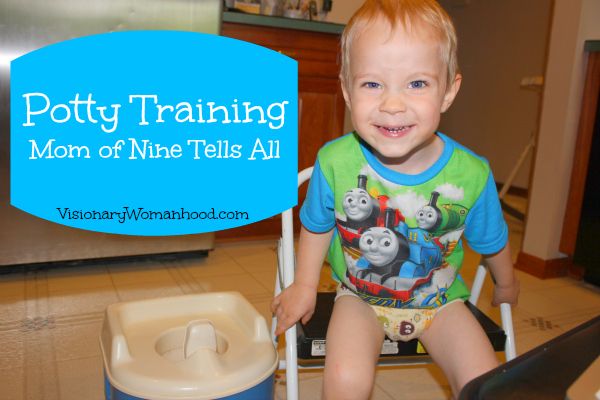 If you are worried about cleanliness around, you can put the potty on a disposable diaper (make sure it does not slip on the floor) or a rubber mat. nine0005
If you are worried about cleanliness around, you can put the potty on a disposable diaper (make sure it does not slip on the floor) or a rubber mat. nine0005
Step 3: Show how to use the potty. Place a teddy bear, rabbit or doll on the potty. The role-playing game will allow you to consolidate the pattern of behavior. If there is a baby doll who can really write if you give him water to drink, then this will be even more of a help.
Another important point. There are children who do not want to sit on the potty, but prefer to immediately sit on the toilet "like a big one." Excellent - a special toilet seat and your own example will help solve this problem. nine0005
Step 4: Remove the diaper. A child who constantly walks in a diaper will not learn to go to the potty simply because he does not correlate the processes in his body with the result of what is happening. To establish this connection, he needs to see everything with his own eyes and feel it for himself. That is why panties for potty training began to appear, which do not immediately absorb all the moisture.
For the time when you remove the diaper and potty train your baby, it is better to use comfortable clothes that the toddler can easily take off by himself. Most accidents most often occur for a banal reason: the child does not have time to unbutton and zip on jeans, pull off tight leggings and tights, and then also panties. Make it easy for him. nine0005
One mother, while potty training, simply covered the entire floor in her apartment with disposable diapers, and undressed the children, and they ran around naked. Her life hack has since been used by thousands of fans, and it really works. When a child sees that a puddle appears on the floor after he has peed, he begins to understand how this happens, which means that a causal relationship is formed faster.
Step 5: Offer the pot on the "schedule". This does not mean that you need to set an alarm clock and put your child on the potty by the hour.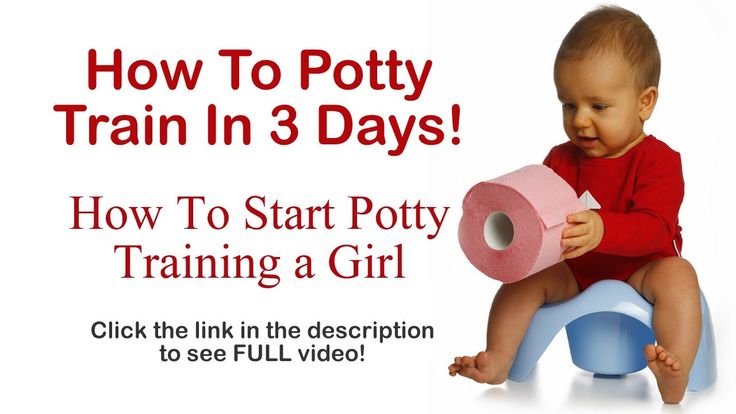 No. A simple rule works here: a potty after sleep and before bed, plus 15–20 minutes after eating, as well as before and after a walk. nine0005
No. A simple rule works here: a potty after sleep and before bed, plus 15–20 minutes after eating, as well as before and after a walk. nine0005
The season, oddly enough, also matters, especially in our latitudes. Easier and faster potty training occurs in spring and summer, when a child can run around the countryside naked, and in the city - in light shorts or panties and a dress. Accidents, which will undoubtedly happen at first, do not damage the psyche of parents, which means that the number of shouts and shameful words is minimized, since even the most patient and conscious parent has the right to break down at some point and not withstand the next wet pants. nine0005
By the way, in Japan, children are potty trained in the summer for purely hygienic reasons. It’s just that in winter, tatami mats lie on the floor in houses, which are very difficult to wash in case of unforeseen situations.
Step 6: Remove the diaper completely. When you potty train your child, at first, the diaper should be worn only for daytime and nighttime sleep. Then he is first removed for daytime sleep, covering the bed with disposable diapers, and after some time (for some children it may take a week, while for others it may take several months), they begin to remove the diaper for a night's sleep too. And here you need to be prepared for the fact that wet nights will happen, even if you put the child on the potty in the middle of the night. This is completely normal. nine0005
Then he is first removed for daytime sleep, covering the bed with disposable diapers, and after some time (for some children it may take a week, while for others it may take several months), they begin to remove the diaper for a night's sleep too. And here you need to be prepared for the fact that wet nights will happen, even if you put the child on the potty in the middle of the night. This is completely normal. nine0005
Potty training hacks
The process of potty training should be easy and fun for all involved, both parent and child. What can be done for this?
- Motivation system. Have your child put stickers on the potty for each success;
- Beautiful lingerie. Buy beautiful panties for your child. which will be a pity to get dirty. The main thing - in no case do not scold if the toddler still did not cope with the task. Everything can always be washed off; nine0122
- Habit calendar. Together with your child, start a calendar in which mark the date when he becomes very big and learns to use the potty - in a month and a half.
 As we remember, a habit is formed in 21 days, and this period, on average, is enough to teach a two-year-old child to go to the potty. Cross out days together, celebrate successes (we don’t celebrate failures) and be sure to celebrate X-day;
As we remember, a habit is formed in 21 days, and this period, on average, is enough to teach a two-year-old child to go to the potty. Cross out days together, celebrate successes (we don’t celebrate failures) and be sure to celebrate X-day; - Fairy tale therapy. Read therapeutic stories about potty training or make up one yourself. nine0122
Mistakes of parents in the process of potty training
The period of potty training is quite stressful for both the child and parents. One word can sometimes spoil everything that has been achieved in a few weeks.
Do's and Don'ts
- Being stressed. Children are very sensitive to the mood of an adult, and if mom and dad are constantly nervous about wet pants, then the child will worry and everything will turn out much worse for him; nine0122
- Hurry . You should move at the pace of the child, and not drive him, trying to be in time for a specific date or just to brag that you potty trained a child in just five days;
- Shame.
